François Truffaut (1932-1984) was one of the most popular and successful French filmmakers ever. The French film director, screenwriter, producer, actor, and film critic was one of the founders of the Nouvelle Vague and his main themes were passion, women, childhood, and faithfulness. He created such classics as Les quatre cents coups/The 400 blows (1959), Jules et Jim (1961) and La Nuit Américaine/Day for Night (1973). His life and films were mixed up and one of his quotes is "Cinema is an improvement on life".

French postcard in the Collection Noire by Editions Hazan, Paris, no. 6109, 1989. Photo: Les films du Carosse, Paris. François Truffaut at the set of Jules et Jim (François Truffaut, 1961).

Jean-Pierre Léaud. French postcard by Editions du Globe, Paris, no. 870. Photo: Studio Vauclair, Paris.

French postcard in the Collection Noire by Editions Hazan, Paris, no. 6429, 1994. Photo: Raymond Depardon / Magnum Photos. François Truffaut and Jean-Pierre Cargol at the set of L'Enfant sauvage (François Truffaut, 1969).
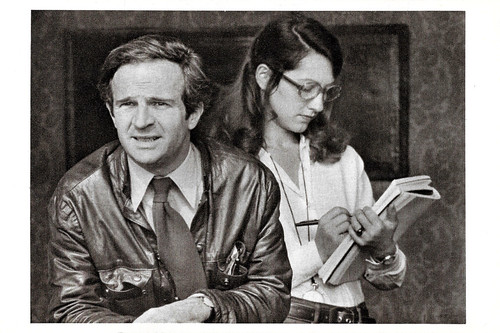
French postcard by Editions La Malibran, Paris, no. CF 32. Photo: Pierre Zucca. François Truffaut and Nathalie Baye in La Nuit Américaine (François Truffaut, 1973).

French postcard by Editions Photomanie, Paris, no. G 76 Photo: Jacques Prayer, Gamma. François Truffaut at the set of Le dernier métro/The Last Metro (François Truffaut, 1980).
François Roland Truffaut was born in 1932 in Paris. He was the son of Jeanine de Montferrand. His mother's future husband, Roland Truffaut, accepted him as an adopted son and gave him his surname.
An only child, François saw little of his working parents during his childhood. He was raised by his maternal grandmother. His grandmother instilled in him her love of books and music. He lived with his grandmother until her death when Truffaut was eight years old and he returned to his parents.
The young Truffaut began to assiduously go to the cinema. Cinema offered Truffaut the greatest escape from unsatisfying home life. He was also a great reader but not a good pupil. He frequently skipped school and sneaked into cinemas because he lacked the money for admission. As a teenager, he was involved in petty theft and incidences of violence.
François left school at 14 and started teaching himself. Two of his academic goals were to watch three films a day and read three books a week. Truffaut frequented Henri Langlois's Cinémathèque Française, where he was exposed to countless foreign films. He became familiar with American cinema and directors such as John Ford, Howard Hawks, Alfred Hitchcock, and Nicholas Ray.
In 1947, aged 15, he founded a film club and met André Bazin, a French critic, who became his protector. Bazin helped Truffaut out of various financial and criminal situations. In 1950, he enlisted in the French army, hoping to be assigned to the film branch, but he was assigned first to Germany and then to Indochina as an artilleryman. He deserted the army and was put in jail.
Again, Bazin came to the rescue and used his political contacts to get Truffaut released and set him up with a job at his new film magazine, Cahiers du cinéma. In 1953 Truffaut published his first film critiques in this magazine, and Truffaut became a defender of Bazin's 'auteur theory'. In 1954, Truffaut wrote an article in Cahiers du cinéma, 'Une Certaine Tendance du Cinéma Français' (A Certain Trend of French Cinema), in which he attacked the state of French films, lambasting certain screenwriters and producers.
His less positive film reviews could be quite brutal and unforgiving. Years later when some of his reviews were published in book format, the director attempted to omit his more savage reviews. The article caused a storm of controversy and landed Truffaut an offer to write for the nationally circulated, more widely read cultural weekly Arts-Lettres-Spectacles. Truffaut wrote more than 500 film articles for that publication over the next four years.
In 1954, Truffaut also directed his first short film, Une Visite/A Visit (1955). Then, he assisted Roberto Rossellini with some later abandoned projects. 1957 was an important year for him. He married Madeleine Morgenstern, the daughter of an important film distributor.
He also founded his own production company, Les Films du Carrosse, named after Jean Renoir's Le carrosse d'or/The Golden Coach (1952). And he directed the short film Les mistons/The Mischief Makers (1957), with Gérard Blain and Bernadette Lafont. It is considered the real first step of his cinematographic work.
Another big year for him was 1959. It was the year that his first daughter, Laura Truffaut was born. And his first full-length film was released, the tender, semi-autobiographical Les quatre cents coups/The 400 Blows (1959). The young Jean-Pierre Léaud played Antoine Donel who gradually descends into petty crime. The film became a huge success and Truffaut won the Best Director award at the 1959 Cannes Film Festival.
Les quatre cents coups was one of the first highlights of the Nouvelle Vague (New Wave). This movement gave directors such as Jean-Luc Godard, Claude Chabrol, and Jacques Rivette a wider audience. The New Wave dealt with a self-conscious rejection of traditional cinema structure.

German press photo by Bildarchiv Engelmeier, München. Issued for the broadcasting by the ZDF on 8 January 1998. Jean-Pierre Léaud, Albert Remy and Claire Maurier in Les quatre cents coups/The 400 Blows (François Truffaut, 1959).

German press photo by Bildarchiv Engelmeier, München. Jean-Pierre Léaud in Les Quatre Cents Coups/The 400 Blows (François Truffaut, 1959).
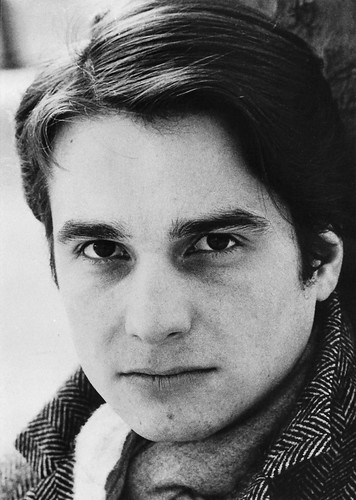
German press photo by Kövesdi Presse Agentur, München (Munich). Used for the German broadcasting by ZDF in 1983. Jean-Pierre Léaud in Antoine et Colette/Antoine and Colette (François Truffaut, 1962).

German press photo by ORF. Used for the German broadcasting of the film in 1994. Jean-Pierre Léaud in Baisers volés/Stolen Kisses (François Truffaut, 1968).
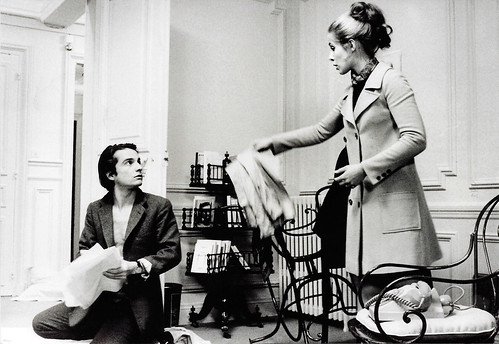
German press photo by ORF. Released for the broadcasting on 1 October 1994. Jean-Pierre Léaud and Claude Jade in Domicile Conjugal (François Truffaut, 1970).

German press photo. Jean-Pierre Léaud in L'amour en fuite/Love on the Run (François Truffaut, 1979).
François Truffaut followed Antoine Doinel, the lead character in Les quatre cents coups/The 400 blows (1959), from boyhood to adulthood through five films, all starring Jean-Pierre Léaud.
The second film was the short Antoine et Colette/Antoine and Colette (1962). It was made for the anthology film L'amour à 20 ans/Love at Twenty (1962), which featured also shorts from the renowned directors Shintarô Ishihara, Marcel Ophüls, Renzo Rossellini, and Andrzej Wajda.
The third film in the series is the feature Baisers volés/Stolen Kisses (1968). In this film, Antoine begins his relationship with Christine Darbon (Claude Jade), which is depicted further in the last two films in the series, Domicile conjugal/Bed & Board (1970) and L'amour en fuite/Love on the Run (1979).
Truffaut had a disagreement with his family over the content of some of his films. His family felt that the more autobiographical details represented them in a negative and false light. Unfortunately, the tensions between them remained for the rest of Truffaut's life.
Very popular and highly influential was Truffaut's third film, Jules and Jim (1962). Set around the time of World War I, it describes a tragic love triangle involving French Bohemian Jim (Henri Serre), his shy Austrian friend Jules (Oskar Werner), and Jules's girlfriend and later wife Catherine (Jeanne Moreau).
Truffaut's other notable films of the 1960s include La peau douce/The Soft Skin (1964), Truffaut's first non-French film Fahrenheit 451 (1966) with Julie Christie, and L'Enfant sauvage/The Wild Child (1970), which included Truffaut's acting debut in the lead role of 18th-century physician Jean Marc Gaspard Itard.
One of his best films is La Nuit Américaine/Day for Night (1973), starring Jacqueline Bisset, Jean-Pierre Léaud, and Truffaut himself. It is the story of a film crew trying to finish a film while dealing with the personal and professional problems that accompany film making. "La Nuit américaine" (literally American Night) is the French name for the filmmaking process whereby sequences filmed outdoors in daylight are shot with a filter over the camera lens. In English, the technique is called "day for night". The film earned Truffaut the BAFTA Award for Best Film and the Oscar for Best Foreign Language Film.
Later highlights include the historical drama L'Histoire d'Adèle H./The Story of Adèle H. (1975) with Isabelle Adjani, another historical drama Le Dernier Métro/The Last Metro (1980) which starred Catherine Deneuve and Gérard Depardieu and garnered 10 Césars, including Best Director, and La Femme d'à côté/The Woman Next Door (1981), the story of a fatal romance between a loving husband (Gérard Depardieu) and the attractive woman (Fanny Ardant) who moves in next door.
François Truffaut died of a brain tumor in 1984 in Neuilly-sur-Seine, Hauts-de-Seine, and is buried in the Montmartre cemetery in Paris, France. He was married to Madeleine Morgenstern from 1957 till their divorce in 1965. They had two children, Laura Truffaut (1959) and Eva Truffaut (1961) He had long-time relationships with the actresses Claude Jade and Fanny Ardant. With Ardant, he had a daughter, Josephine Truffaut (1982).

German press photo by Tele Bunk tv, Berlin. Issued for the broadcasting by the ZDF on 8 January 1998. Jean-Pierre Léaud in Les quatre cents coups/The 400 Blows (François Truffaut, 1959).
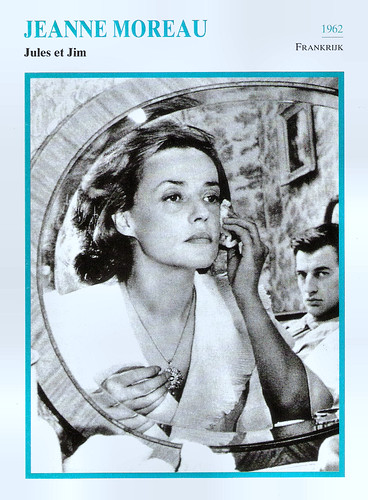
Dutch collectors card in the series 'Filmsterren: een portret' by Edito Service, 1995. Photo: Sunset / KIPA-Interpress. Publicity still for Jules et Jim/Jules and Jim (François Truffaut, 1962) with Jeanne Moreau and Henri Serre.

French postcard in the Collection Cinéma by Editions Art & Scene, Paris, no. CF 891996. Photo: R. Cauchetier. Jeanne Moreau, Oskar Werner and Henri Serre (left) in Jules et Jim/Jules and Jim (François Truffaut, 1962).

French postcard by E.D.U.G., no. 484. Photo: Atlantic Press. Julie Christie in Fahrenheit 451 (François Truffaut, 1966).
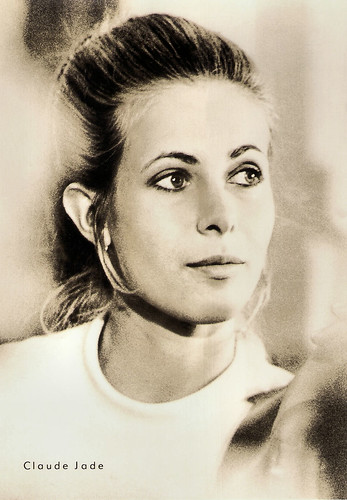
East-German postcard by VEB Progress Filmvertrieb, Berlin, no. 174/71, 1971. Photo: Linke. Claude Jade in Domicile conjugal/Bed & Board (François Truffaut, 1970).

German press photo. Photo: defd / Foto Engelmeier, München. Jacqueline Bisset and Jean-Pierre Léaud in La nuit américaine/Day for Night (François Truffaut, 1973). The press photo was used for the German broadcasting of the film by the ARD on 20 December 1981.

French postcard by Editions La Malibran, Paris, no. CF 43, 1991. Isabelle Adjani and François Truffaut in L'histoire d'Adèle H./The Story of Adèle H. (François Truffaut, 1975).

French postcard in the Collection Cinéma by Editions La Malibran, Paris, no. CF 68, 1990. Fanny Ardant in Vivement dimanche!/Confidentially Yours (François Truffaut, 1983). It was Truffaut's final film.
Sources: Wikipedia, and IMDb.

French postcard in the Collection Noire by Editions Hazan, Paris, no. 6109, 1989. Photo: Les films du Carosse, Paris. François Truffaut at the set of Jules et Jim (François Truffaut, 1961).

Jean-Pierre Léaud. French postcard by Editions du Globe, Paris, no. 870. Photo: Studio Vauclair, Paris.

French postcard in the Collection Noire by Editions Hazan, Paris, no. 6429, 1994. Photo: Raymond Depardon / Magnum Photos. François Truffaut and Jean-Pierre Cargol at the set of L'Enfant sauvage (François Truffaut, 1969).

French postcard by Editions La Malibran, Paris, no. CF 32. Photo: Pierre Zucca. François Truffaut and Nathalie Baye in La Nuit Américaine (François Truffaut, 1973).

French postcard by Editions Photomanie, Paris, no. G 76 Photo: Jacques Prayer, Gamma. François Truffaut at the set of Le dernier métro/The Last Metro (François Truffaut, 1980).
The greatest escape from unsatisfying home life
François Roland Truffaut was born in 1932 in Paris. He was the son of Jeanine de Montferrand. His mother's future husband, Roland Truffaut, accepted him as an adopted son and gave him his surname.
An only child, François saw little of his working parents during his childhood. He was raised by his maternal grandmother. His grandmother instilled in him her love of books and music. He lived with his grandmother until her death when Truffaut was eight years old and he returned to his parents.
The young Truffaut began to assiduously go to the cinema. Cinema offered Truffaut the greatest escape from unsatisfying home life. He was also a great reader but not a good pupil. He frequently skipped school and sneaked into cinemas because he lacked the money for admission. As a teenager, he was involved in petty theft and incidences of violence.
François left school at 14 and started teaching himself. Two of his academic goals were to watch three films a day and read three books a week. Truffaut frequented Henri Langlois's Cinémathèque Française, where he was exposed to countless foreign films. He became familiar with American cinema and directors such as John Ford, Howard Hawks, Alfred Hitchcock, and Nicholas Ray.
In 1947, aged 15, he founded a film club and met André Bazin, a French critic, who became his protector. Bazin helped Truffaut out of various financial and criminal situations. In 1950, he enlisted in the French army, hoping to be assigned to the film branch, but he was assigned first to Germany and then to Indochina as an artilleryman. He deserted the army and was put in jail.
Again, Bazin came to the rescue and used his political contacts to get Truffaut released and set him up with a job at his new film magazine, Cahiers du cinéma. In 1953 Truffaut published his first film critiques in this magazine, and Truffaut became a defender of Bazin's 'auteur theory'. In 1954, Truffaut wrote an article in Cahiers du cinéma, 'Une Certaine Tendance du Cinéma Français' (A Certain Trend of French Cinema), in which he attacked the state of French films, lambasting certain screenwriters and producers.
His less positive film reviews could be quite brutal and unforgiving. Years later when some of his reviews were published in book format, the director attempted to omit his more savage reviews. The article caused a storm of controversy and landed Truffaut an offer to write for the nationally circulated, more widely read cultural weekly Arts-Lettres-Spectacles. Truffaut wrote more than 500 film articles for that publication over the next four years.
In 1954, Truffaut also directed his first short film, Une Visite/A Visit (1955). Then, he assisted Roberto Rossellini with some later abandoned projects. 1957 was an important year for him. He married Madeleine Morgenstern, the daughter of an important film distributor.
He also founded his own production company, Les Films du Carrosse, named after Jean Renoir's Le carrosse d'or/The Golden Coach (1952). And he directed the short film Les mistons/The Mischief Makers (1957), with Gérard Blain and Bernadette Lafont. It is considered the real first step of his cinematographic work.
Another big year for him was 1959. It was the year that his first daughter, Laura Truffaut was born. And his first full-length film was released, the tender, semi-autobiographical Les quatre cents coups/The 400 Blows (1959). The young Jean-Pierre Léaud played Antoine Donel who gradually descends into petty crime. The film became a huge success and Truffaut won the Best Director award at the 1959 Cannes Film Festival.
Les quatre cents coups was one of the first highlights of the Nouvelle Vague (New Wave). This movement gave directors such as Jean-Luc Godard, Claude Chabrol, and Jacques Rivette a wider audience. The New Wave dealt with a self-conscious rejection of traditional cinema structure.

German press photo by Bildarchiv Engelmeier, München. Issued for the broadcasting by the ZDF on 8 January 1998. Jean-Pierre Léaud, Albert Remy and Claire Maurier in Les quatre cents coups/The 400 Blows (François Truffaut, 1959).

German press photo by Bildarchiv Engelmeier, München. Jean-Pierre Léaud in Les Quatre Cents Coups/The 400 Blows (François Truffaut, 1959).

German press photo by Kövesdi Presse Agentur, München (Munich). Used for the German broadcasting by ZDF in 1983. Jean-Pierre Léaud in Antoine et Colette/Antoine and Colette (François Truffaut, 1962).

German press photo by ORF. Used for the German broadcasting of the film in 1994. Jean-Pierre Léaud in Baisers volés/Stolen Kisses (François Truffaut, 1968).

German press photo by ORF. Released for the broadcasting on 1 October 1994. Jean-Pierre Léaud and Claude Jade in Domicile Conjugal (François Truffaut, 1970).

German press photo. Jean-Pierre Léaud in L'amour en fuite/Love on the Run (François Truffaut, 1979).
Dealing with the personal and professional problems that accompany film making
François Truffaut followed Antoine Doinel, the lead character in Les quatre cents coups/The 400 blows (1959), from boyhood to adulthood through five films, all starring Jean-Pierre Léaud.
The second film was the short Antoine et Colette/Antoine and Colette (1962). It was made for the anthology film L'amour à 20 ans/Love at Twenty (1962), which featured also shorts from the renowned directors Shintarô Ishihara, Marcel Ophüls, Renzo Rossellini, and Andrzej Wajda.
The third film in the series is the feature Baisers volés/Stolen Kisses (1968). In this film, Antoine begins his relationship with Christine Darbon (Claude Jade), which is depicted further in the last two films in the series, Domicile conjugal/Bed & Board (1970) and L'amour en fuite/Love on the Run (1979).
Truffaut had a disagreement with his family over the content of some of his films. His family felt that the more autobiographical details represented them in a negative and false light. Unfortunately, the tensions between them remained for the rest of Truffaut's life.
Very popular and highly influential was Truffaut's third film, Jules and Jim (1962). Set around the time of World War I, it describes a tragic love triangle involving French Bohemian Jim (Henri Serre), his shy Austrian friend Jules (Oskar Werner), and Jules's girlfriend and later wife Catherine (Jeanne Moreau).
Truffaut's other notable films of the 1960s include La peau douce/The Soft Skin (1964), Truffaut's first non-French film Fahrenheit 451 (1966) with Julie Christie, and L'Enfant sauvage/The Wild Child (1970), which included Truffaut's acting debut in the lead role of 18th-century physician Jean Marc Gaspard Itard.
One of his best films is La Nuit Américaine/Day for Night (1973), starring Jacqueline Bisset, Jean-Pierre Léaud, and Truffaut himself. It is the story of a film crew trying to finish a film while dealing with the personal and professional problems that accompany film making. "La Nuit américaine" (literally American Night) is the French name for the filmmaking process whereby sequences filmed outdoors in daylight are shot with a filter over the camera lens. In English, the technique is called "day for night". The film earned Truffaut the BAFTA Award for Best Film and the Oscar for Best Foreign Language Film.
Later highlights include the historical drama L'Histoire d'Adèle H./The Story of Adèle H. (1975) with Isabelle Adjani, another historical drama Le Dernier Métro/The Last Metro (1980) which starred Catherine Deneuve and Gérard Depardieu and garnered 10 Césars, including Best Director, and La Femme d'à côté/The Woman Next Door (1981), the story of a fatal romance between a loving husband (Gérard Depardieu) and the attractive woman (Fanny Ardant) who moves in next door.
François Truffaut died of a brain tumor in 1984 in Neuilly-sur-Seine, Hauts-de-Seine, and is buried in the Montmartre cemetery in Paris, France. He was married to Madeleine Morgenstern from 1957 till their divorce in 1965. They had two children, Laura Truffaut (1959) and Eva Truffaut (1961) He had long-time relationships with the actresses Claude Jade and Fanny Ardant. With Ardant, he had a daughter, Josephine Truffaut (1982).

German press photo by Tele Bunk tv, Berlin. Issued for the broadcasting by the ZDF on 8 January 1998. Jean-Pierre Léaud in Les quatre cents coups/The 400 Blows (François Truffaut, 1959).

Dutch collectors card in the series 'Filmsterren: een portret' by Edito Service, 1995. Photo: Sunset / KIPA-Interpress. Publicity still for Jules et Jim/Jules and Jim (François Truffaut, 1962) with Jeanne Moreau and Henri Serre.

French postcard in the Collection Cinéma by Editions Art & Scene, Paris, no. CF 891996. Photo: R. Cauchetier. Jeanne Moreau, Oskar Werner and Henri Serre (left) in Jules et Jim/Jules and Jim (François Truffaut, 1962).

French postcard by E.D.U.G., no. 484. Photo: Atlantic Press. Julie Christie in Fahrenheit 451 (François Truffaut, 1966).

East-German postcard by VEB Progress Filmvertrieb, Berlin, no. 174/71, 1971. Photo: Linke. Claude Jade in Domicile conjugal/Bed & Board (François Truffaut, 1970).

German press photo. Photo: defd / Foto Engelmeier, München. Jacqueline Bisset and Jean-Pierre Léaud in La nuit américaine/Day for Night (François Truffaut, 1973). The press photo was used for the German broadcasting of the film by the ARD on 20 December 1981.

French postcard by Editions La Malibran, Paris, no. CF 43, 1991. Isabelle Adjani and François Truffaut in L'histoire d'Adèle H./The Story of Adèle H. (François Truffaut, 1975).

French postcard in the Collection Cinéma by Editions La Malibran, Paris, no. CF 68, 1990. Fanny Ardant in Vivement dimanche!/Confidentially Yours (François Truffaut, 1983). It was Truffaut's final film.
Sources: Wikipedia, and IMDb.
No comments:
Post a Comment